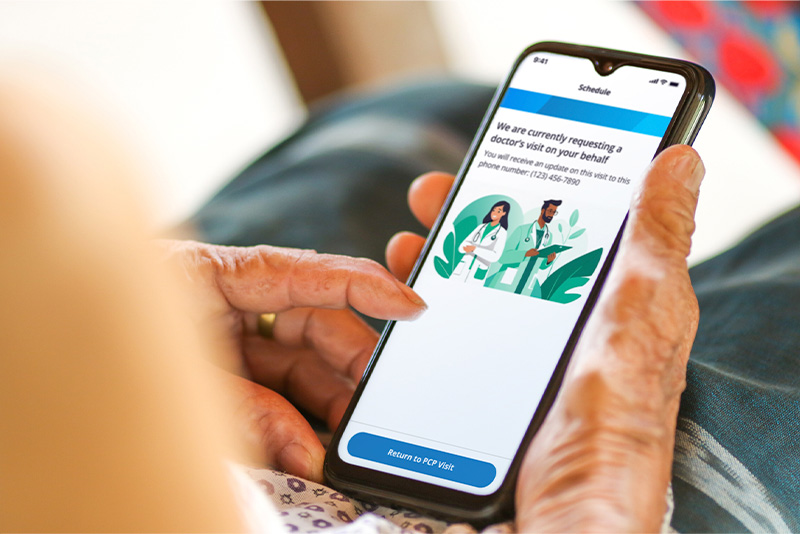Strategically improve member engagement, spend and health outcomes by building trusting relationships with members. Traditional engagement strategies rely on transactional interactions that reflect business arrangements rather than meaningful healthcare experiences. By establishing health plans as a trusted resource for members, teams can accelerate the value of every message to drive continuous improvements.
Explore what it means to make the most of every member moment and the impact of transformational engagement on plan performance.
Challenges with Transactional Engagement
Transactional engagement simplifies member journeys to linear checklists of measurable activities to complete. This approach focuses solely on achieving short-term goals without factoring in how subsequent messages will shape member dispositions or overall health journeys. Plans will only engage members when it is necessary to close care gaps, while members will only complete health actions when there is an immediate benefit to them, such as addressing a health condition or earning a reward.
“Transactional engagement constantly leaves members asking, ‘What is in it for me?’ whenever they receive messages,” says Chris Gage, Director of Experience Strategy. “If the benefits are clear and relevant to them in the moment, transactional engagement can achieve short-term, positive results. However, plans will ultimately struggle to move members over longer periods of time.”
Relying on one-off, generic messaging can:
- Alienate members and contribute to inaction
- Contribute to poorer health outcomes
- Lead to wasted outreach from low conversion rates
- Strain budgets due to an overreliance on rewards
- Foster poor member experiences and negative plan perceptions
- Degrade member trust
- Fail to adapt to evolving regulatory requirements
Shift from Transactional to Transformative Engagement

In contrast to transactional engagement, transformative engagement puts member moments first. Outreach is continuous and informed by member data to drive ongoing improvements in health outcomes rather than conducting one-off outreach to close specific care gaps. The result fosters meaningful relationships with members and builds trust.
“At the center of every healthcare interaction is the member,” says Kimberly Swanson, Chief of Staff. “Meeting members where they are with personalized, relevant guidance to address their physical, behavioral and social needs is the key to overcoming the biggest challenges in our industry.”
Measures are still relevant to guiding initiatives, but outreach focuses first on reaching members where they are and then directing them to the next best health action. By refining outreach with the right messaging, channels and timing, teams can achieve stronger conversion rates and measure performance. This approach creates a continuous feedback loop where each touchpoint captures new data to support further outreach.
Improving the impact of outreach drives better cost-savings by giving teams greater control over budgets and reduces expenses. Coordinated outreach means that every engagement and rewards dollar goes towards impactful messages that drives primary care visits, fewer emergency room visits and better medical loss ratios. Teams can also optimize incentive budgets by rewarding high-value measures rather than every interaction.
Transformative engagement also provides teams with flexible outreach strategies. Transactional outreach restricts when and where teams engage members, but member-centric strategies coordinate messages around key member moments. These strategies are more adaptable and can adjust messaging to keep members engaged with relevant information throughout the year.
Achieve Meaningful Engagement with Quality Relationship Management™
Transitioning from transactional to transformative strategies requires significant IT resources and engagement expertise. With healthcare constantly shifting, making this transition without a strong foundation in data, outreach and technology is extremely difficult.
Quality Relationship Management (QRM®) streamlines this process for health plans. QRM serves as a central engagement control tower for managing member touchpoints, aligning data and outreach, and scaling personalization. Through a flexible toolkit, teams can coordinate data-driven engagement strategies to continuously guide members to the right health actions while maximizing plan performance.
Here are five areas where QRM addresses health plan pain points:
- Consolidate member data to quickly identify and address social determinants of health, negative experiences and health risks with coordinated, personalized interventions.
- Monitor campaign metrics and track the impact of member outreach on health outcomes, quality scores, risk code identification, CAHPS performance and reward programs.
- Apply behavioral science and content strategy best practices to ensure every message has a powerful impact on member dispositions and health outcomes.
- Empower teams to rapidly adapt to evolving regulatory requirements with a suite of flexible member engagement, data collection and personalization solutions.
- Streamline member engagement while minimizing the use of costly, non-digital outreach, reducing reliance on point solutions and eliminating manual processes that drain resources.
See for yourself how QRM makes the most of every member moment by unifying data, outreach and goals into an integrated platform. Contact us for a demo.

.svg)


.svg)











